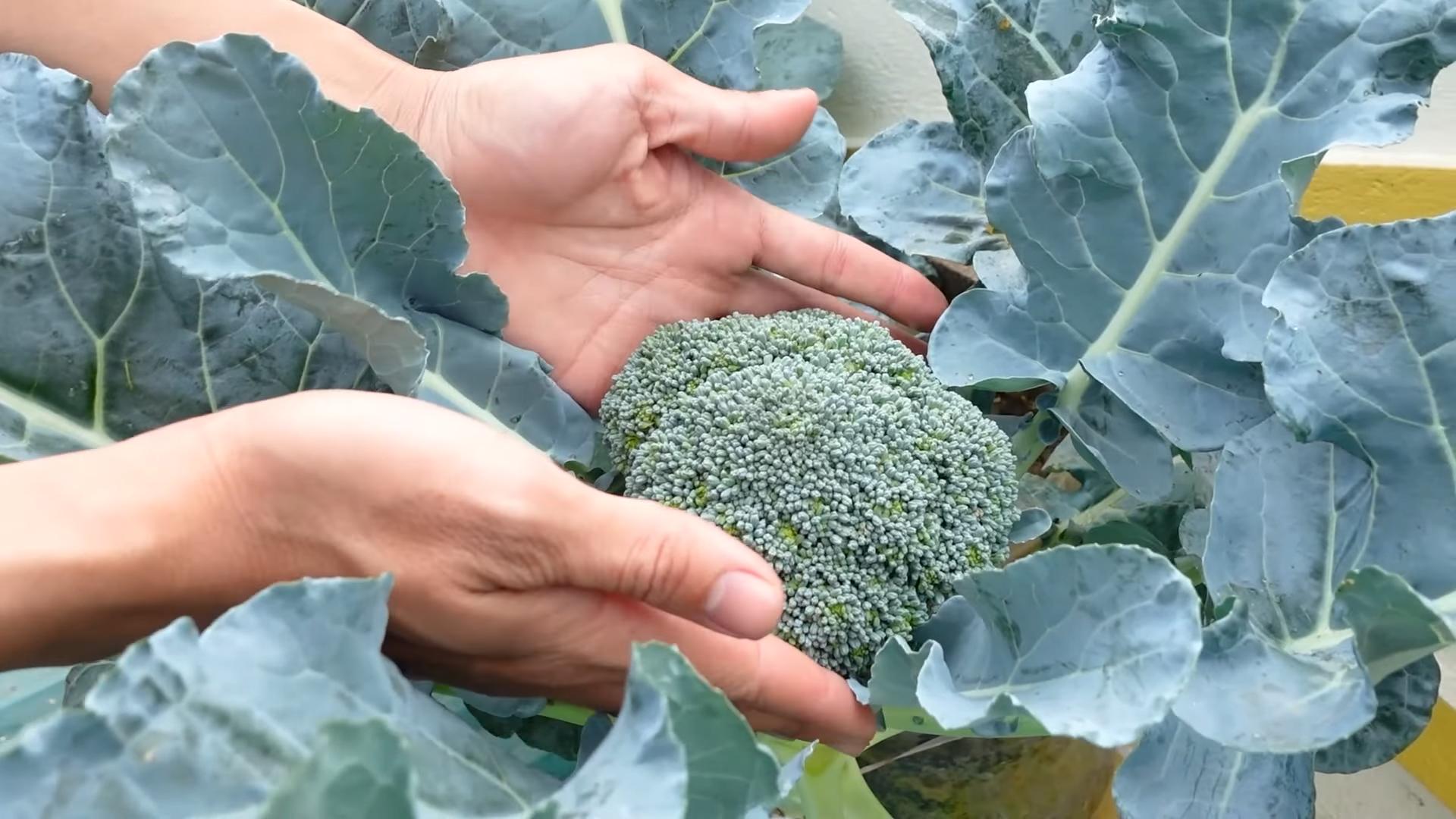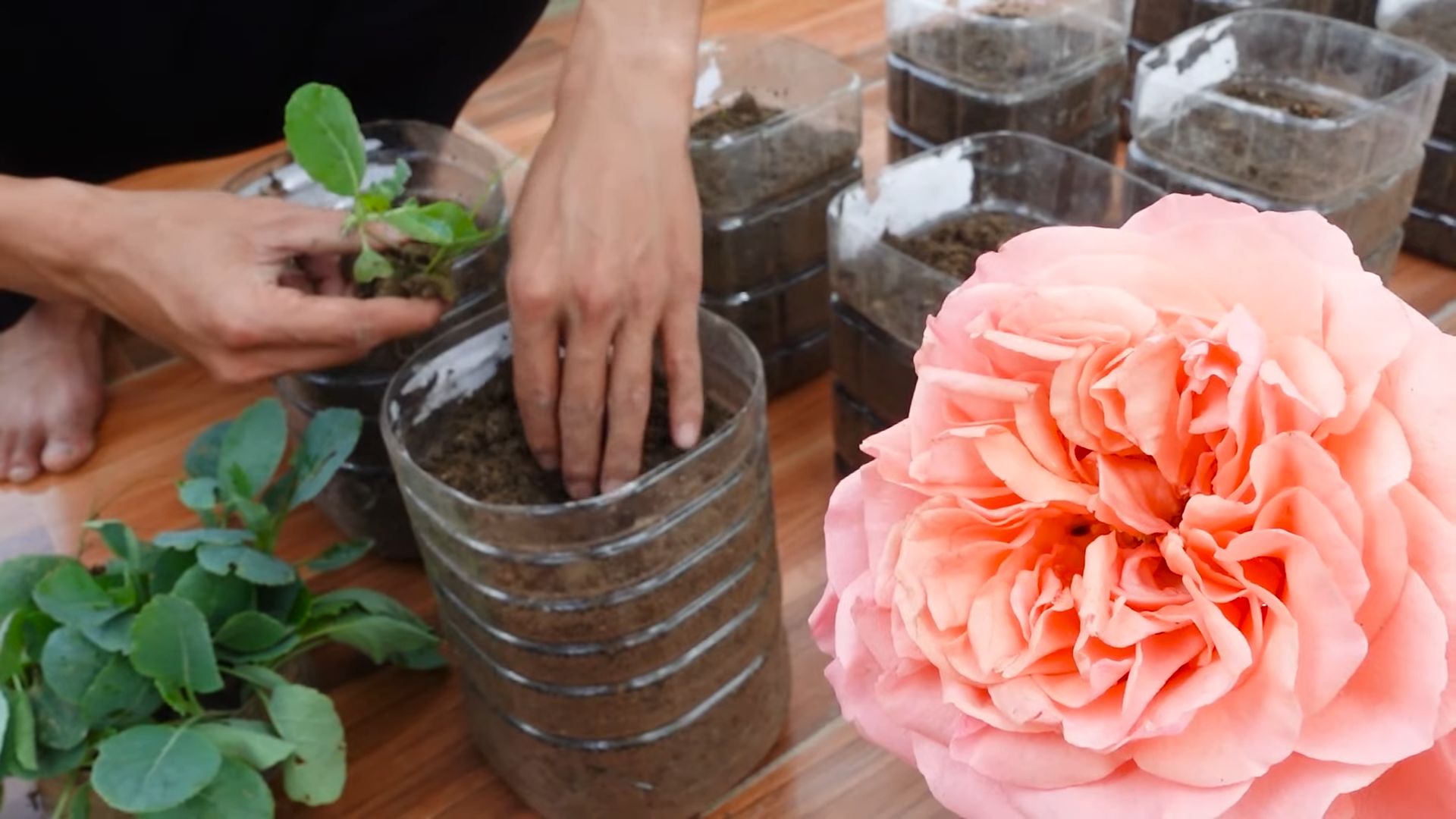Oversized broccoli cooking tips are essential knowledge for any home cook who’s ever been blessed (or perhaps slightly overwhelmed!) by a bountiful harvest. I know I have! There’s nothing quite like the satisfaction of growing your own vegetables, but sometimes, Mother Nature has a way of showering us with more than we bargained for. We’ve all been there, staring at a broccoli head the size of a small child, wondering, “Now what am I going to do with that?”
Broccoli, a member of the Brassica family, has a rich history, dating back to ancient Roman times. It was considered a delicacy and a symbol of health and vitality. Today, it remains a nutritional powerhouse, packed with vitamins, minerals, and antioxidants. But let’s be honest, even the most ardent broccoli lover can get a little tired of the same old steamed florets, especially when faced with a giant specimen. That’s where these DIY cooking tricks come in!
Why do you need these oversized broccoli cooking tips? Because letting that beautiful, homegrown broccoli go to waste is simply not an option! Plus, learning creative ways to prepare it will not only prevent food waste but also expand your culinary horizons. I’m going to share some simple, yet effective, methods to transform that colossal broccoli into delicious and exciting meals. From roasting to pureeing, and even pickling, get ready to unlock the full potential of your garden’s generous gift. Let’s get cooking!

Taming the Broccoli Behemoth: A Guide to Cooking Oversized Broccoli
Okay, so you’ve got a broccoli head the size of your head (or maybe even bigger!). Don’t panic! I know, it can be a little intimidating. But trust me, cooking oversized broccoli is totally doable, and with a few tweaks to your usual method, you can have perfectly cooked, delicious broccoli on the table. The key is understanding how the different parts of the broccoli cook and adjusting your cooking time accordingly. Let’s dive in!
Understanding Your Broccoli Giant
Before we even think about cooking, let’s talk about the anatomy of your oversized broccoli. This is important because the stems and florets cook at different rates.
* The Florets: These are the little tree-like buds that make up the top part of the broccoli. They cook relatively quickly and can easily become mushy if overcooked.
* The Stalk: This is the thick, sturdy stem that supports the florets. It takes longer to cook than the florets and can be tough if not properly prepared.
* The Leaves (if any): Sometimes, you’ll find leaves attached to the broccoli stalk. These are perfectly edible and can be cooked along with the rest of the broccoli, but they cook even faster than the florets.
Prepping Your Broccoli for Success
Proper preparation is half the battle! This is where we make sure everything is ready to cook evenly.
1. Wash Thoroughly: First things first, give your broccoli a good rinse under cold water. Pay attention to the florets, as they can sometimes trap dirt or small insects. I like to soak mine in a bowl of cold water for a few minutes to really get it clean.
2. Trim the Stalk: The bottom of the stalk can be tough and woody. Cut off the very end (about an inch or so) and discard it.
3. Peel the Stalk (Optional, but Recommended): This is where the magic happens! Use a vegetable peeler to remove the tough outer layer of the stalk. This will help it cook more evenly and make it much more tender. Don’t skip this step, especially with oversized broccoli!
4. Separate the Florets: Now, carefully cut or break the florets away from the main stalk. Try to make them roughly the same size so they cook evenly. If some florets are particularly large, you can cut them in half or even quarters.
5. Slice the Stalk: Don’t throw away that beautiful stalk! Slice it into smaller pieces, about 1/4 to 1/2 inch thick. This will ensure it cooks through properly. You can slice it into rounds, sticks, or even small cubes – whatever you prefer.
6. Prepare the Leaves (if using): If your broccoli has leaves, give them a good wash and chop them into smaller pieces.
Cooking Methods for Oversized Broccoli
Now for the fun part! Here are a few of my favorite ways to cook oversized broccoli, ensuring everything is cooked to perfection.
Steaming: The Gentle Approach
Steaming is a great way to cook broccoli because it preserves its nutrients and keeps it from getting waterlogged.
1. Set Up Your Steamer: Fill a pot with about an inch or two of water and bring it to a boil. Place a steamer basket inside the pot, making sure the water doesn’t touch the bottom of the basket.
2. Add the Stalk First: Place the sliced broccoli stalk in the steamer basket. Cover the pot and steam for about 5-7 minutes, or until the stalk is slightly tender.
3. Add the Florets: Now, add the broccoli florets to the steamer basket. Cover the pot again and steam for another 3-5 minutes, or until the florets are bright green and tender-crisp.
4. Add the Leaves (if using): If you’re using broccoli leaves, add them to the steamer basket during the last minute of cooking. They cook very quickly, so you don’t want to overcook them.
5. Check for Doneness: To check if the broccoli is done, pierce the stalk with a fork. It should be tender but still have a little bit of resistance. The florets should be easily pierced with a fork but not mushy.
6. Serve Immediately: Remove the broccoli from the steamer basket and serve immediately. You can season it with salt, pepper, lemon juice, or your favorite herbs and spices.
Roasting: For Maximum Flavor
Roasting broccoli brings out its natural sweetness and gives it a slightly crispy texture. This is my go-to method when I want a really flavorful side dish.
1. Preheat Your Oven: Preheat your oven to 400°F (200°C).
2. Toss with Oil and Seasonings: In a large bowl, toss the broccoli florets and sliced stalk with olive oil, salt, pepper, and any other seasonings you like. I often add garlic powder, onion powder, and a pinch of red pepper flakes. Make sure the broccoli is evenly coated with oil.
3. Spread on a Baking Sheet: Spread the broccoli in a single layer on a baking sheet. Make sure the pieces aren’t overcrowded, as this will cause them to steam instead of roast.
4. Roast the Stalk First: Place the baking sheet in the preheated oven and roast for about 10 minutes.
5. Add the Florets: Remove the baking sheet from the oven and add the florets. Toss everything together and spread it back out in a single layer.
6. Continue Roasting: Return the baking sheet to the oven and roast for another 10-15 minutes, or until the broccoli is tender-crisp and slightly browned.
7. Add the Leaves (if using): If you’re using broccoli leaves, add them to the baking sheet during the last 5 minutes of cooking.
8. Check for Doneness: The broccoli is done when the florets are tender-crisp and slightly browned, and the stalk is easily pierced with a fork.
9. Serve Immediately: Remove the broccoli from the oven and serve immediately. You can sprinkle it with grated Parmesan cheese, lemon juice, or your favorite herbs.
Blanching and Sautéing: A Quick and Easy Option
This method is perfect for when you’re short on time but still want perfectly cooked broccoli.
1. Blanch the Broccoli: Bring a large pot of salted water to a boil. Add the broccoli florets and sliced stalk and cook for 2-3 minutes, or until they are bright green and slightly tender.
2. Shock in Ice Water: Immediately drain the broccoli and plunge it into a bowl of ice water. This will stop the cooking process and help the broccoli retain its vibrant color.
3. Sauté the Broccoli: Heat a tablespoon or two of olive oil in a large skillet over medium heat. Add the blanched broccoli and sauté for 3-5 minutes, or until it is heated through and slightly browned.
4. Add the Leaves (if using): If you’re using broccoli leaves, add them to the skillet during the last minute of cooking.
5. Season and Serve: Season the broccoli with salt, pepper, and any other seasonings you like. Serve immediately.
Tips for Perfectly Cooked Oversized Broccoli
Here are a few extra tips to help you achieve broccoli perfection:
* Don’t Overcook: Overcooked broccoli is mushy and loses its flavor. Aim for tender-crisp.
* Cut Evenly: Cutting the florets and stalk into roughly the same size pieces will help them cook evenly.
* Use a Sharp Knife: A sharp knife will make it easier to cut the broccoli and prevent it from bruising.
* Experiment with Seasonings: Broccoli is a blank canvas for flavor. Try different herbs, spices, and sauces to find your favorite combinations.
* Don’t Be Afraid to Adjust Cooking Times: Cooking times can vary depending on the size of your broccoli and your oven. Keep an eye on it and adjust the cooking time as needed.
* Save the Broccoli Water: If you steam or boil your broccoli, don’t throw away the water! It’s full of nutrients and can be used to make soup or stock.
Serving Suggestions
Broccoli is a versatile vegetable that can be served in a variety of ways. Here are a few ideas:
* As a Side Dish: Serve it alongside grilled chicken, fish, or steak.
* In a Salad: Add it to your favorite salad for a boost of nutrients and flavor.
* In a Stir-Fry: Use it in a stir-fry with other vegetables and your favorite protein.
* In a Soup: Add it to soup for a healthy and delicious meal.
* As a Snack: Dip raw broccoli florets in hummus or your favorite dip.
So there you have

Conclusion
So, there you have it! Conquering oversized broccoli doesn’t have to be a culinary challenge. By employing these simple yet effective techniques, you can transform that seemingly daunting head of broccoli into a delicious and nutritious side dish or ingredient for your favorite recipes. The key takeaway is understanding that size matters, but with the right approach, even the largest broccoli can be cooked to perfection.
This DIY trick is a must-try because it addresses the common pitfalls of cooking large broccoli heads. No more uneven cooking, mushy stems, or bland florets! This method ensures that every part of the broccoli is cooked evenly, retaining its vibrant green color and maximizing its flavor. It’s a game-changer for anyone who regularly buys broccoli, especially those who prefer to purchase larger, more economical heads.
But don’t stop there! Feel free to experiment with variations to suit your taste preferences. For example, after steaming or blanching, try roasting the broccoli with a drizzle of olive oil, garlic powder, and a pinch of red pepper flakes for a crispy and flavorful side dish. Alternatively, toss the cooked broccoli with a lemon vinaigrette and toasted almonds for a refreshing salad. You can even puree the cooked broccoli into a creamy and healthy soup. The possibilities are endless!
Don’t be intimidated by that giant broccoli head lurking in your refrigerator. Embrace these tips and techniques, and you’ll be amazed at how easy it is to transform it into a culinary masterpiece. We’re confident that this method will become your go-to approach for cooking oversized broccoli.
We highly encourage you to try this DIY trick and share your experience with us! Let us know in the comments below how it worked for you, what variations you tried, and any other tips or tricks you discovered along the way. Your feedback is invaluable and helps us refine and improve our recipes and techniques. We can’t wait to hear your success stories and see your delicious broccoli creations! Mastering the art of cooking oversized broccoli is within your reach, so go ahead and give it a try. You won’t be disappointed!
Frequently Asked Questions (FAQ)
Why is my broccoli always mushy when I cook it?
Mushy broccoli is often the result of overcooking. When dealing with oversized broccoli, the florets tend to cook faster than the thicker stem. This leads to the florets becoming mushy while the stem is still undercooked. The techniques outlined in this article, such as separating the florets and stem and cooking them separately, help to ensure even cooking and prevent mushiness. Also, using the steaming or blanching method allows for more controlled cooking compared to boiling, which can easily lead to overcooking.
How do I know when my broccoli is cooked perfectly?
The ideal texture for cooked broccoli is tender-crisp. This means that the florets should be easily pierced with a fork but still retain a slight bite. The stem should also be tender but not mushy. A good way to test for doneness is to pierce the stem with a fork. If it goes in easily with minimal resistance, the broccoli is likely cooked perfectly. Remember that the cooking time will vary depending on the size of the broccoli and the cooking method used, so it’s always best to check for doneness periodically.
Can I use frozen broccoli instead of fresh broccoli?
Yes, you can use frozen broccoli, but the cooking time will need to be adjusted. Frozen broccoli is typically pre-blanched, so it will cook faster than fresh broccoli. When using frozen broccoli, it’s best to steam or microwave it until it’s heated through and tender-crisp. Avoid boiling frozen broccoli, as it can easily become mushy. Also, keep in mind that frozen broccoli may not have the same vibrant color and crisp texture as fresh broccoli.
What are some other ways to cook oversized broccoli besides steaming and blanching?
While steaming and blanching are excellent methods for cooking oversized broccoli evenly, you can also try roasting or grilling. To roast broccoli, toss the florets and chopped stem with olive oil, salt, pepper, and any other desired seasonings. Spread them in a single layer on a baking sheet and roast at 400°F (200°C) for 15-20 minutes, or until tender-crisp and slightly browned. To grill broccoli, toss the florets and chopped stem with olive oil, salt, and pepper. Grill them over medium heat for 5-7 minutes per side, or until tender-crisp and slightly charred.
How can I make my broccoli more flavorful?
There are many ways to enhance the flavor of broccoli. Before cooking, consider marinating the broccoli florets in a mixture of olive oil, lemon juice, garlic, and herbs. After cooking, you can toss the broccoli with a variety of sauces, dressings, or toppings. Some popular options include lemon vinaigrette, garlic butter, parmesan cheese, toasted almonds, and red pepper flakes. You can also add broccoli to stir-fries, soups, and casseroles to boost their nutritional value and flavor.
Is it safe to eat the broccoli stem?
Absolutely! The broccoli stem is just as nutritious as the florets and has a slightly sweeter flavor. However, the stem is tougher than the florets and requires a longer cooking time. That’s why it’s important to peel the tough outer layer of the stem before cooking and to chop it into smaller pieces. You can use the chopped stem in the same way as the florets, or you can add it to soups, stews, or stir-fries.
How do I store leftover cooked broccoli?
Leftover cooked broccoli should be stored in an airtight container in the refrigerator. It will typically last for 3-4 days. To reheat the broccoli, you can microwave it, steam it, or sauté it in a pan. Be careful not to overcook it when reheating, as it can easily become mushy. You can also add leftover cooked broccoli to salads, omelets, or frittatas.
Can I freeze cooked broccoli?
Yes, you can freeze cooked broccoli, but it’s best to blanch it first to preserve its color and texture. To blanch broccoli, submerge it in boiling water for 2-3 minutes, then immediately transfer it to an ice bath to stop the cooking process. Drain the broccoli thoroughly and spread it in a single layer on a baking sheet. Freeze for 1-2 hours, or until solid. Then, transfer the frozen broccoli to an airtight container or freezer bag. Frozen broccoli will typically last for 8-12 months.
What are the nutritional benefits of eating broccoli?
Broccoli is a nutritional powerhouse, packed with vitamins, minerals, and antioxidants. It’s an excellent source of vitamin C, vitamin K, folate, and fiber. Broccoli also contains compounds that have been shown to have anti-cancer properties. Eating broccoli regularly can help to boost your immune system, improve your digestion, and protect against chronic diseases.
What if my oversized broccoli has started to turn yellow?
If your broccoli is starting to turn yellow, it means it’s beginning to lose its freshness. While it’s still safe to eat, the flavor and texture may not be as good. Yellowing broccoli tends to be more bitter and may have a slightly softer texture. If the yellowing is minimal, you can still use the broccoli, but be sure to cook it thoroughly. If the broccoli is significantly yellowed or has a strong odor, it’s best to discard it. To prevent broccoli from turning yellow, store it in the refrigerator in a loose plastic bag or wrapped in a damp paper towel.





Leave a Comment